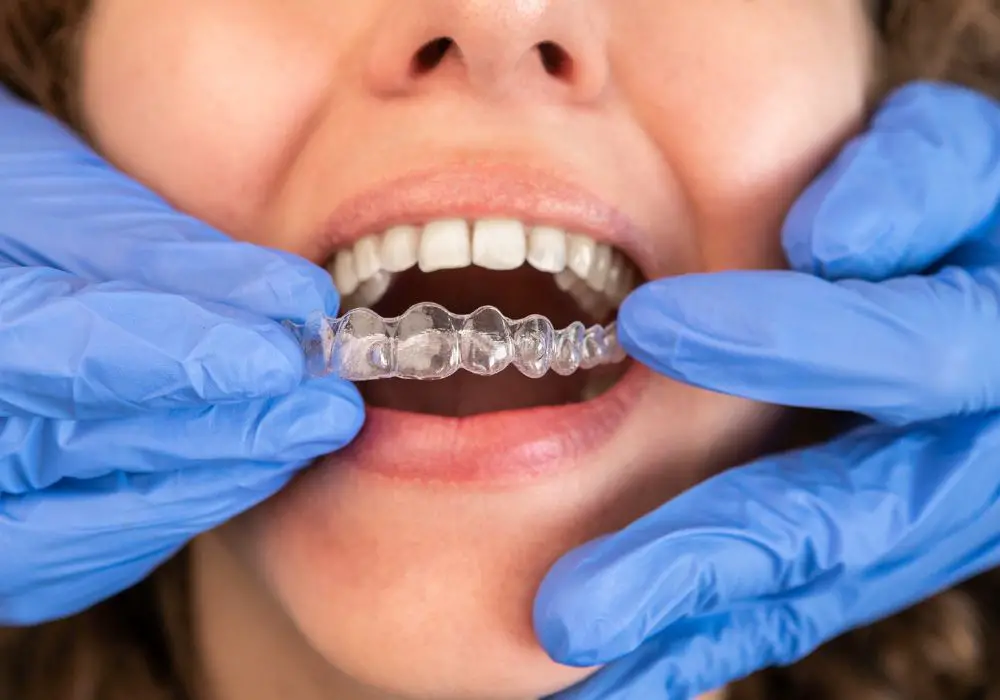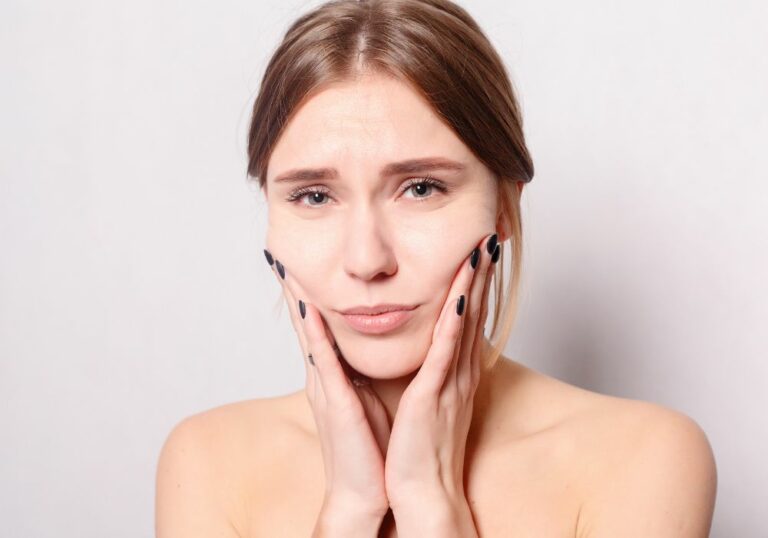Whitening your teeth is a popular cosmetic dental procedure that can help you achieve a brighter, more confident smile. If you’re currently undergoing Invisalign treatment, you may be wondering if you can whiten your teeth with Invisalign attachments. The good news is that you can whiten your teeth while wearing Invisalign aligners, but there are some important things to keep in mind.
Most orthodontists recommend waiting until your Invisalign treatment is complete before undergoing any teeth whitening procedures. This is because your teeth may be more sensitive during the realignment process, which could make any whitening procedures more difficult or uncomfortable. However, once your treatment is finished, you can safely whiten your teeth with Invisalign attachments and enjoy a brighter, more beautiful smile.
It’s also important to note that some whitening products may be more effective than others when used with Invisalign attachments. Your dentist or orthodontist can recommend the best whitening products to use with your Invisalign aligners, and can provide you with helpful tips and advice on how to achieve the best results. With the right approach, you can safely and effectively whiten your teeth with Invisalign attachments and enjoy a beautiful, confident smile.
Understanding Invisalign Attachments

If you are undergoing Invisalign treatment, you may have heard about attachments. Invisalign attachments are small tooth-colored shapes that are bonded to your teeth to help the aligners apply pressure to move your teeth into the correct position. In this section, we will discuss what Invisalign attachments are and how they work.
What Are Invisalign Attachments?
Invisalign attachments, also known as buttons, are small, tooth-colored shapes that are attached to your teeth with dental adhesive. They are made of a composite material that matches the color of your teeth, making them virtually invisible. The purpose of Invisalign attachments is to help the aligners apply pressure to specific teeth, which helps to move them into the correct position.
Invisalign attachments are not always necessary, but they are often used in cases where teeth need to be rotated, moved vertically, or moved in complex ways. Your orthodontist will determine if Invisalign attachments are necessary for your treatment plan.
How Do Invisalign Attachments Work?
Invisalign attachments work by providing a surface for the aligners to grip onto, which helps to apply pressure to specific teeth. The attachments are strategically placed on your teeth to help the aligners move your teeth into the correct position.
Once the attachments are in place, you will wear your Invisalign aligners as usual. The attachments will help to apply pressure to your teeth, which will gradually move them into the correct position. You may feel some pressure or discomfort when you first start wearing your aligners with attachments, but this is normal and should subside after a few days.
It is important to note that Invisalign attachments may make it more difficult to whiten your teeth. The composite material used to make the attachments does not respond to whitening agents in the same way that natural tooth enamel does. If you are considering teeth whitening, it is best to discuss this with your orthodontist to determine the best course of action.
In summary, Invisalign attachments are small, tooth-colored shapes that are bonded to your teeth to help the aligners apply pressure to move your teeth into the correct position. They work by providing a surface for the aligners to grip onto, which helps to apply pressure to specific teeth. If you have Invisalign attachments, it is important to follow your orthodontist’s instructions to ensure the best possible outcome for your treatment.
Teeth Whitening Basics
What Is Teeth Whitening
Teeth whitening is the process of removing stains and discoloration from teeth to make them appear brighter. It is a cosmetic dental procedure that can be done at home or by a dentist. Teeth whitening can be done using various methods, including whitening toothpaste, over-the-counter whitening products, and professional teeth whitening treatments.
Different Teeth Whitening Methods
There are different teeth whitening methods available, and each has its advantages and disadvantages. Here are some of the most common methods:
- Whitening Toothpaste: This is the easiest and most affordable way to whiten your teeth. Whitening toothpaste contains mild abrasives that help remove surface stains from teeth. However, it may not be effective for deep stains.
- Over-the-Counter Whitening Products: These include whitening strips, gels, and trays that can be purchased at drugstores or online. These products contain hydrogen peroxide or carbamide peroxide that helps break down stains. They are easy to use and can provide noticeable results in a few weeks.
- In-Office Teeth Whitening: This is a professional teeth whitening treatment that is done by a dentist. It involves applying a high concentration of hydrogen peroxide or carbamide peroxide to teeth and using a special light to activate the whitening agent. This method provides immediate results but can be expensive.
- At-Home Teeth Whitening Kits: These kits are prescribed by a dentist and involve using custom-fitted trays and a whitening gel at home. This method is more effective than over-the-counter products and provides noticeable results in a few weeks.
It is important to note that teeth whitening may not be suitable for everyone. It is best to consult with a dentist before undergoing any teeth whitening procedure, especially if you have sensitive teeth or gum disease.
Can Invisalign Attachments Whiten Teeth?

If you’re considering Invisalign treatment, you may be wondering if you can whiten your teeth at the same time. The good news is that you can whiten your teeth with Invisalign attachments, but there are a few things to keep in mind.
Invisalign attachments, also known as buttons, are small tooth-colored bumps that are bonded to your teeth to help the aligners grip them better. While they can make it more challenging to whiten your teeth, it’s still possible to achieve a brighter smile with some extra effort.
Here are a few things to consider when trying to whiten your teeth with Invisalign attachments:
- Timing: It’s best to wait until after your Invisalign treatment is complete to whiten your teeth. This is because your teeth may be more sensitive during treatment, and whitening could cause discomfort. Additionally, the attachments can make it more challenging to whiten evenly. Waiting until after treatment ensures that your teeth are in their final position, and you can achieve consistent results.
- Type of whitening: There are several types of teeth whitening, including in-office treatments, at-home kits, and whitening toothpaste. While all of these options can be effective, some may be better suited for use with Invisalign attachments than others. For example, whitening toothpaste may not be as effective at removing stains around the attachments, while at-home kits may be more challenging to use with the aligners in place.
- Consult with your dentist: Your dentist can help you determine the best course of action for whitening your teeth with Invisalign attachments. They may recommend waiting until after treatment or suggest a specific type of whitening that will work best for your situation.
Overall, it is possible to whiten your teeth with Invisalign attachments, but it may require some extra effort and patience. By waiting until after treatment, choosing the right type of whitening, and consulting with your dentist, you can achieve a brighter, more confident smile.
The Role of Invisalign Attachments in Teeth Whitening
If you’re considering teeth whitening while wearing Invisalign aligners, it’s important to understand the role that attachments play in the process.
Attachments are small, tooth-colored bumps that are bonded to your teeth to provide additional grip for the aligners. While they can make the aligners more effective at straightening your teeth, they can also complicate the teeth whitening process.
One of the main concerns with whitening while wearing attachments is that the attachments themselves may not whiten at the same rate as your teeth. This can result in uneven coloration and a less-than-ideal final result.
Additionally, the attachments may make it more difficult to apply the whitening gel evenly across your teeth. Some people have reported that the gel was less effective in the areas beneath the attachments, which required additional whitening sessions after the attachments were removed.
However, there are ways to work around these challenges. Some whitening agents are specifically designed for use with aligners and use a foam cleanser instead of a gel. This can help ensure that the whitening agent is evenly distributed and doesn’t get squeezed out of the aligners.
Ultimately, the decision to whiten your teeth while wearing Invisalign attachments is a personal one that should be made in consultation with your orthodontist. They can help you weigh the pros and cons and determine whether whitening is a good option for you.
Precautions When Whitening Teeth with Invisalign Attachments
Whitening your teeth with Invisalign attachments is a great way to achieve a brighter, more radiant smile. However, there are some precautions you should take to ensure that the process is safe and effective. Here are a few things to keep in mind when whitening your teeth with Invisalign attachments:
1. Consult with your dentist
Before you start whitening your teeth with Invisalign attachments, it’s important to consult with your dentist. Your dentist can evaluate your oral health and determine whether whitening is a good option for you. They can also recommend the best whitening products and techniques for your specific needs.
2. Use the right products
When whitening your teeth with Invisalign attachments, it’s important to use the right products. Avoid using whitening gels that contain high levels of hydrogen peroxide, as this can damage your teeth and gums. Instead, look for low-dose whitening gels that are safe for use with Invisalign attachments.
3. Be mindful of attachments
Invisalign attachments are small, tooth-colored bumps that are bonded to your teeth to help the aligners grip better. When whitening your teeth with Invisalign attachments, be mindful of these bumps. Whitening gel may not be as effective in areas where attachments are present, so you may need to whiten these areas separately once your treatment is complete.
4. Follow instructions carefully
When using any whitening products with Invisalign attachments, be sure to follow the instructions carefully. Overuse or misuse of whitening products can lead to tooth sensitivity, gum irritation, and other problems. If you experience any discomfort or irritation while whitening your teeth with Invisalign attachments, stop the treatment and consult with your dentist.
By following these precautions, you can safely and effectively whiten your teeth while using Invisalign attachments. With a little patience and care, you can achieve a brighter, more beautiful smile that you’ll be proud to show off.
Alternatives for Teeth Whitening with Invisalign Attachments

If you have Invisalign attachments, you may be wondering if you can still whiten your teeth during treatment. While it is possible to whiten your teeth with Invisalign attachments, there are some potential drawbacks to consider. Fortunately, there are also alternative teeth whitening options that you can explore.
Over-the-Counter Whitening Products
Over-the-counter whitening products can be a good option if you have Invisalign attachments. These products typically contain a lower concentration of whitening agents, which can be gentler on your teeth and gums. Some popular options include:
- Whitening toothpaste
- Whitening strips
- Whitening gels
- Whitening pens
Keep in mind that these products may not be as effective as professional teeth whitening treatments. Additionally, if you have sensitive teeth, you may want to avoid using these products, as they can cause discomfort.
Professional Teeth Whitening Treatments
If you want to achieve more dramatic results, you may want to consider professional teeth whitening treatments. Your dentist can provide you with a custom whitening treatment that is tailored to your specific needs. Some common options include:
- In-office whitening treatments
- Take-home whitening kits
- Custom whitening trays
Professional teeth whitening treatments can be more expensive than over-the-counter products, but they are typically more effective and longer-lasting.
Natural Teeth Whitening Remedies
If you prefer to avoid using chemical-based whitening products, there are also some natural teeth whitening remedies that you can try. These remedies may not be as effective as other options, but they can be gentler on your teeth and gums. Some popular natural teeth whitening remedies include:
- Baking soda and hydrogen peroxide paste
- Coconut oil pulling
- Apple cider vinegar rinse
- Activated charcoal paste
Keep in mind that natural teeth whitening remedies may not be suitable for everyone. Some remedies can be abrasive or acidic, which can damage your tooth enamel if used too frequently.
Overall, there are several alternatives to teeth whitening with Invisalign attachments that you can consider. Talk to your dentist to determine which option is best for you.
Frequently Asked Questions
Can I whiten my teeth while using Invisalign attachments?
Yes, you can whiten your teeth while using Invisalign attachments. However, it is important to note that the attachments may not whiten as well as your teeth, which could result in them standing out more.
Does Invisalign whitening work with attachments?
Invisalign whitening can work with attachments, but the effectiveness may vary. If the attachments are not made with translucent resin, they may not change color when you whiten your teeth.
What are some tips for whitening teeth with Invisalign attachments?
To whiten your teeth with Invisalign attachments, you can use whitening toothpaste or mouthwash when you take your trays out to clean your teeth. You can also use low-dose whitening gels during the time that your Invisalign trays are out of your mouth. It is important to follow the instructions provided by your dentist or orthodontist.
How do I prevent discoloration of my Invisalign attachments?
To prevent discoloration of your Invisalign attachments, it is important to avoid consuming food and drinks that can stain your teeth, such as coffee, tea, and red wine. You should also brush and floss regularly to maintain good oral hygiene.
What are the best teeth whitening options for Invisalign wearers?
The best teeth whitening options for Invisalign wearers include whitening toothpaste, mouthwash, and low-dose whitening gels. You should consult with your dentist or orthodontist to determine the best option for you.
Are there any risks to whitening teeth with Invisalign attachments?
There are some risks associated with whitening teeth with Invisalign attachments, such as increased sensitivity or irritation of the gums. It is important to follow the instructions provided by your dentist or orthodontist and to use whitening products in moderation.






